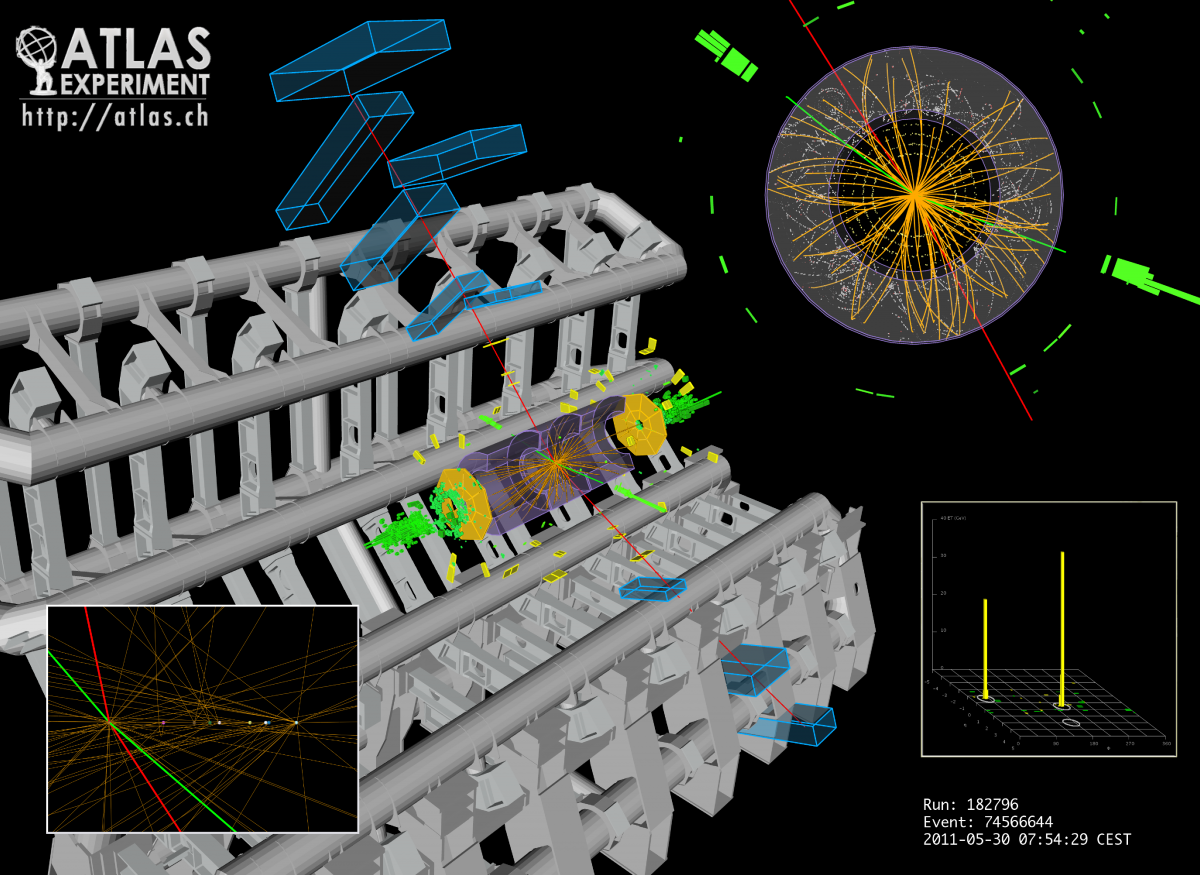Pitt to Host Public Lecture Celebrating Nobel-Lauded Discovery of Higgs Boson
PITTSBURGH—The 2012 discovery of the subatomic particle known as the Higgs boson was a milestone event for thousands of physicists worldwide who were collaborating on experiments at the Large Hadron Collider in Switzerland to search for the extremely elusive particle. Their discovery of the Higgs boson provided evidence for the Higgs mechanism, the prevailing explanation of how particles acquire mass. It was the final piece that physicists needed to prove a theory of elementary particles and their interactions, known as the Standard Model.
For nearly two decades leading up to the discovery, University of Pittsburgh physicists worked on developing fast-trigger electronics and other technologies for the Large Hadron Collider, which contributed to the scientific breakthrough that was recognized by the Royal Swedish Academy of Sciences this month.
The academy announced Oct. 8 that the 2013 Nobel Prize in Physics will be awarded jointly to physicists François Englert and Peter W. Higgs “for the theoretical discovery of a mechanism that contributes to our understanding of the origin of mass of subatomic particles, and which recently was confirmed through the discovery of the predicted fundamental particle, by the ATLAS and CMS experiments at CERN’s Large Hadron Collider.”
Pitt researchers, who have been working on the ATLAS experiment at the Large Hadron Collider since 1994, will explain the science behind the discovery of the Higgs boson and their roles in the discovery at a free public lecture at 4:30 p.m. Oct. 30 in Ballroom B of the University Club, 123 University Place, Oakland.
in Ballroom B of the University Club, 123 University Place, Oakland.
James Mueller, associate professor of physics and astronomy, will describe the experimental evidence for the subatomic particle. Tao Han, professor of physics and astronomy and director of Pitt’s Particle Physics, Astrophysics, and Cosmology Center, will discuss the Higgs mechanism established by the discovery of the Higgs boson.
“We’re going to talk about more than just the discovery, about why this research is fundamentally important for scientific development,” said Han.
A reception will follow their presentations, where Mueller, Han, and their colleagues in Pitt’s Department of Physics and Astronomy will be available to engage in casual discussion about their research.
Pitt physicists developed fast-trigger electronics for the Large Hadron Collider particle-accelerator machine. The electronics recognize high-energy electrons from Higgs boson decay and separate the electrons from background activity. The electronics were an essential part for detecting the presence of the Higgs boson.
In addition, Pitt physicists created software that visualizes the trajectories of particles zooming around inside the Large Hadron Collider. The software has generated many of the images that are helping physicists and the general public alike to visualize the Higgs boson. When global media announced the discovery of the Higgs boson in July 2012, the front page of The Guardian newspaper featured an image depicting the subatomic particle that was generated by the Pitt software. The caption read: “Picture that changes the way we see the universe forever.”
Visit http://www.physicsandastronomy.pitt.edu/pittpacc for more information about Pitt’s Particle Physics, Astrophysics, and Cosmology Center and faculty research related to the Higgs boson.
###
10/29/13/amm/cjhm
Media Resources
Schools of the Health Sciences Media Relations
For more information about Pitt's schools of dental medicine, health and rehabilitation sciences, medicine, nursing, pharmacy, and public health, click here >
To locate stories from health science schools prior to 2013, visit the UPMC news archives »
Urgent Question?
University of Pittsburgh news reps are available to answer urgent media inquiries. Outside of regular business hours (Mon-Fri, 8:30 a.m.-5 p.m.), please email us at media@pitt.edu.
News reps for University of Pittsburgh Health Sciences schools can be reached outside of regular business hours through the paging operator at 1+412-647-2345.


